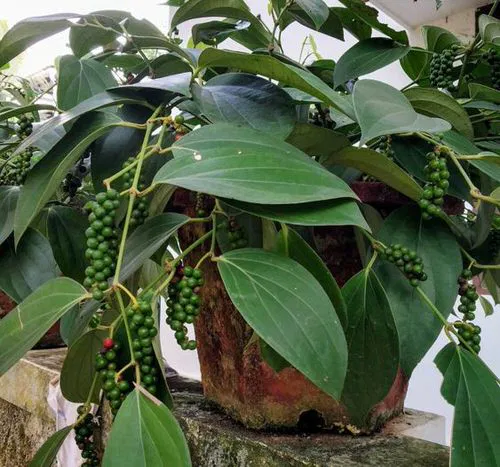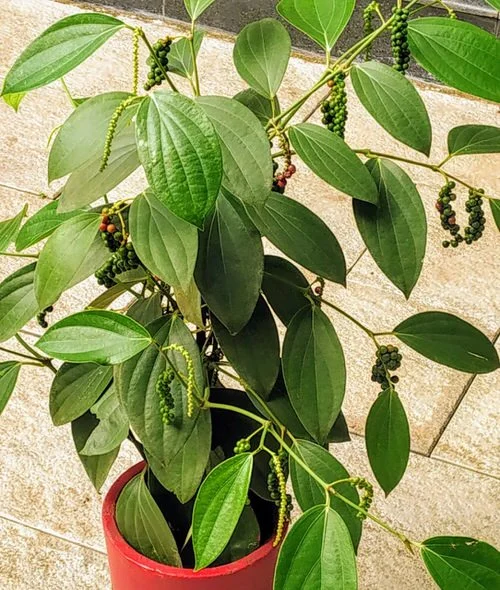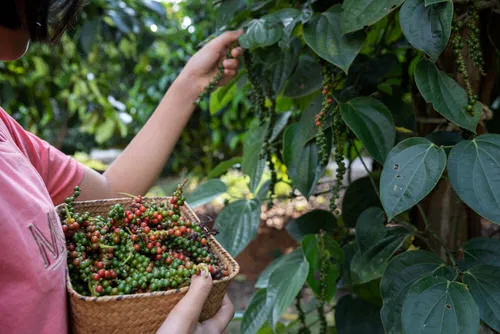How to Grow Black Pepper Plant | Growing Peppercorn
Growing black pepper (Piper nigrum) can be an incredibly rewarding experience. Black pepper, often referred to as the “king of spices,” is a tropical vine that produces the peppercorns used worldwide for their distinct flavor and culinary versatility. This guide will take you through the essential steps of cultivating, caring for, and harvesting black pepper plants, based on my personal experience and best practices in the field.
Understanding Black Pepper Plants
Botanical Information
Black pepper is a perennial vine belonging to the Piperaceae family. It thrives in tropical climates and can grow up to 13 feet tall. The plant produces small, white flowers, which develop into clusters of green berries that eventually mature into the black peppercorns we use in cooking.
Uses of Black Pepper
Black pepper is more than just a common kitchen spice. It has various uses, including culinary applications for seasoning and preserving food, as well as medicinal purposes due to its anti-inflammatory and antioxidant properties.
Choosing the Right Location
Climate Requirements

Black pepper plants flourish in warm, humid climates with temperatures ranging from 75°F to 85°F. They require a long growing season, ample rainfall, or consistent irrigation, making tropical regions ideal for their cultivation. From my own gardening endeavors, I found that ensuring a stable climate is crucial for the healthy growth of pepper plants.
Soil Requirements
The soil should be well-draining, rich in organic matter, and slightly acidic to neutral (pH 5.5 to 7.0). During my gardening journey, I discovered that amending the soil with compost significantly improved the growth and yield of my pepper plants.
Planting Black Pepper
Selecting Quality Seeds or Cuttings

For a successful black pepper garden, starting with high-quality seeds or cuttings is essential. Cuttings are often preferred as they establish more quickly and are true to type. I personally opted for cuttings from a trusted nursery, ensuring disease-free and vigorous plants.
Preparing the Soil
Prepare the planting site by tilling the soil and incorporating organic matter. This step is vital for enhancing soil fertility and structure. Based on my experience, a well-prepared soil bed provides a robust foundation for the young plants.
Planting Process
Plant the cuttings or seeds in the early spring, spacing them about 3 to 4 feet apart. Provide support structures like trellises or poles, as black pepper is a climbing vine. During my planting, I found that bamboo poles worked excellently as they are both sturdy and eco-friendly.
Caring for Black Pepper Plants
Watering
Consistent moisture is key, but avoid waterlogging. Water the plants regularly, especially during dry periods. In my garden, I used a drip irrigation system to maintain optimal soil moisture levels, which proved to be very effective.
Fertilizing
Apply a balanced fertilizer every few months to promote vigorous growth. Organic options like compost or well-rotted manure are excellent choices. From my personal practice, I observed that organic fertilizers not only nourish the plants but also improve soil health over time.
Pruning and Training

Regular pruning helps maintain the plant’s shape and encourages better air circulation, reducing disease risks. Train the vines to climb the support structures. In my garden, I prune the lower leaves and weak stems to focus the plant’s energy on the healthy, productive vines.
Common Pests and Diseases
Identifying Pests
Black pepper plants can be affected by pests such as aphids, mealybugs, and mites. Vigilant monitoring is necessary to catch infestations early. During my cultivation, I regularly inspected the plants and used neem oil as a natural pesticide to keep pests at bay.
Preventative Measures
Preventative measures include maintaining good garden hygiene, ensuring proper spacing for air circulation, and using organic pesticides. I found that introducing beneficial insects like ladybugs helped control pest populations naturally.
Harvesting and Processing
When to Harvest

Peppercorns are ready to harvest when they turn red. This usually occurs about 6-8 months after flowering. In my experience, timing the harvest correctly ensures the best flavor and quality of the peppercorns.
Processing Peppercorns
After harvesting, peppercorns should be dried in the sun for several days until they turn black and shriveled. Proper drying is crucial to prevent mold and preserve flavor. From my personal practice, I spread the peppercorns on a clean, dry surface and turned them regularly to ensure even drying.
Conclusion
Growing black pepper plants can be a fulfilling and enriching experience, yielding a spice that is integral to global cuisine. By following the steps outlined in this guide and incorporating personal insights, you can successfully cultivate your own peppercorns. Remember, patience and attentive care are key to thriving pepper plants. Happy gardening!

